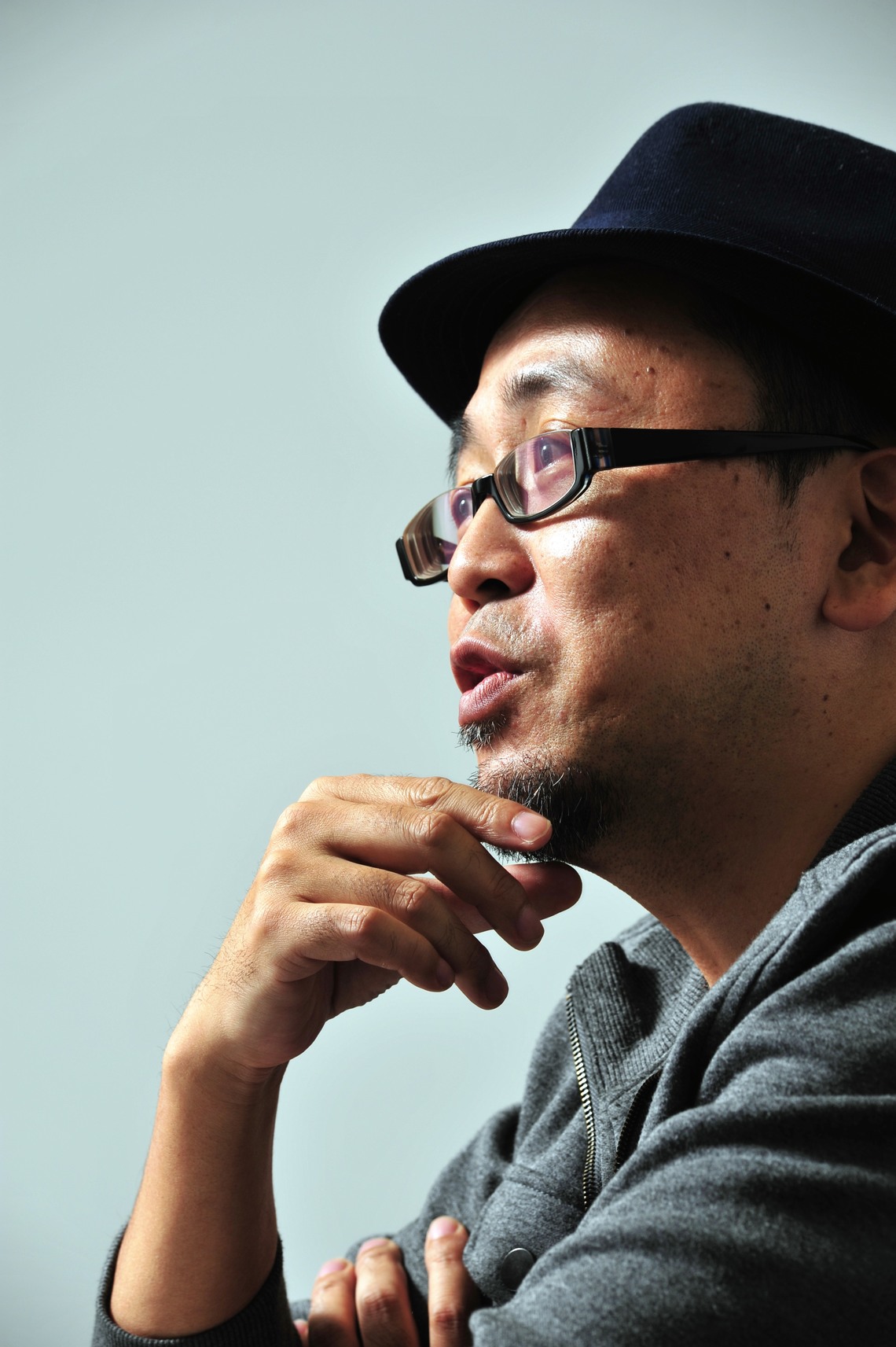"Broadcasting Cool Japan from Regional Origins to the World" Part 2 Mr. FROGMAN

FROGMAN
FROGMAN, who gained significant attention by distributing "Sugai-kun and Family Stone" created with Adobe Flash from Shimane, where he relocated from Tokyo. Then, he achieved a major breakthrough with "Secret Society Takanotsume." He spoke about regionally-based creativity, his own works, and his approach to ideation.
Part 2:
"Cool Japan" is just getting started.
There are several examples of regionally-based video production and distribution. Take the anime "Peeping Life," for instance. Its creator, Ryoichi Mori, was born in Fukuoka, graduated from a university there, and still lives in Fukuoka today. Fukuoka is also home to the creative studio "KOO-KI" (Kuki Co., Ltd.), which specializes in motion graphics, animation, and CG production. While Fukuoka is a major city, the trend of creators spreading to regional areas is notable compared to the era when nearly everything was concentrated in Tokyo.
I hope this trend expands even further. Young people born in regional areas can now create videos without high costs in the places where they grew up. The environment is in place for these works to transcend the boundaries of central vs. regional and be distributed worldwide. In our generation, many people moved to Tokyo with dreams, but life there was so tight that, despite having talent, they couldn't make ends meet and gave up. I've seen many such people. If distribution is possible from regional areas, I believe we can reduce the number of young talents being lost in such a regrettable way.
People often talk about "Cool Japan," but I believe its true launch is just beginning. I hope overseas visitors will start heading directly to regional areas instead of just aiming for Tokyo. Actually, there was a time when "Secret Society Taka no Tsume" ("Taka no Tsume") aired on French cable TV. The following year, according to people in Shimane Prefecture, "French tourists increased sixfold." While a direct causal link isn't certain, Shimane is incredibly hard to access from France. Yet the numbers actually rose, so something definitely happened.
 |
If we actively promote Cool Japan from regional areas, I believe there's a high possibility we could attract overseas tourists nationwide, even via Tokyo. From an overseas perspective, whether it's made in a Tokyo studio or in Shimane, it's both "Made in Japan." There aren't any foreigners who would say, "I won't watch it because it's an anime made in Shimane." "This video is interesting. I wonder what Shimane, where the studio is, is like." Getting people to think that is the first step in deepening Cool Japan.
The advantage of producing locally is capturing that unique atmosphere you can only feel by living there. Behind the public image lies a wealth of things only felt in that specific region. While uniform urban planning has supposedly made places across Japan increasingly similar, that's true only in terms of the physical landscape. In terms of lifestyle, customs, and culture – the softer aspects – the differences between regions are stark. "Yuru-chara" mascots symbolize this shift. What's sought now isn't neatly packaged products, but things that may be a bit rough around the edges yet reek of local flavor. That's the era we're in.
Tokyo and the regions. Creative activities that combine the advantages of both
There are also challenges unique to the regions. Production can be done equally well in Tokyo or the regions, but when it comes to turning it into a business, there are no producers in the regions who can effectively monetize it. It might be difficult unless you have someone with a certain level of experience gained in Tokyo.
Personally, I was able to create videos in Shimane and get them onto DVD, but thinking beyond that, I realized there were limits to what I could do alone. That's why I decided to join forces with DLE, a video production and production company. If I had stubbornly continued alone in the region, it might have ended with just a few DVDs selling.
Licensing opportunities are concentrated in Tokyo, and whether it's publishing or broadcasting, sponsors are also concentrated in major cities like Tokyo. So, I think there are indeed limits to producing from a regional area. What's needed more than ever now is for regional creators and central producers to work hand-in-hand, building a relationship of trust and managing projects together.
Creators must constantly gather diverse information and hone their sensibilities. Compared to when I was in Shimane not long ago, information now reaches regional areas more easily. However, the atmosphere you absorb walking through a city and the stimulation gained from conversations with people still differ significantly between Tokyo and regional areas. Even if based locally, creators should visit Tokyo to sharpen their sensibilities, go to various places, and have opportunities to interact with people. I believe this also helps maintain motivation.
On the other hand, rural areas aren't as chaotic as Tokyo, so there's definitely an aspect where your thinking becomes clearer. When I lived in Shimane, I had so much free time—not that I was searching for myself—but I had plenty of time to settle down and think things through, and that was truly great.
Both are necessary, but in terms of creators making things, Tokyo is saturated. I think interesting things will start emerging from the regions going forward.
Was this article helpful?
Newsletter registration is here
We select and publish important news every day
For inquiries about this article
Author

FROGMAN
Real name: Ryo Ono. Born in Tokyo in 1971. After working as a TV and film production staff member, he relocated to Shimane Prefecture. His Adobe Flash project "Sugai-kun and the Family Stone," conceived as "regional video distribution," garnered significant attention. His schedule became extremely busy following the breakout success of "Secret Society Takanotsume," and he currently divides his time between Tokyo and Shimane.